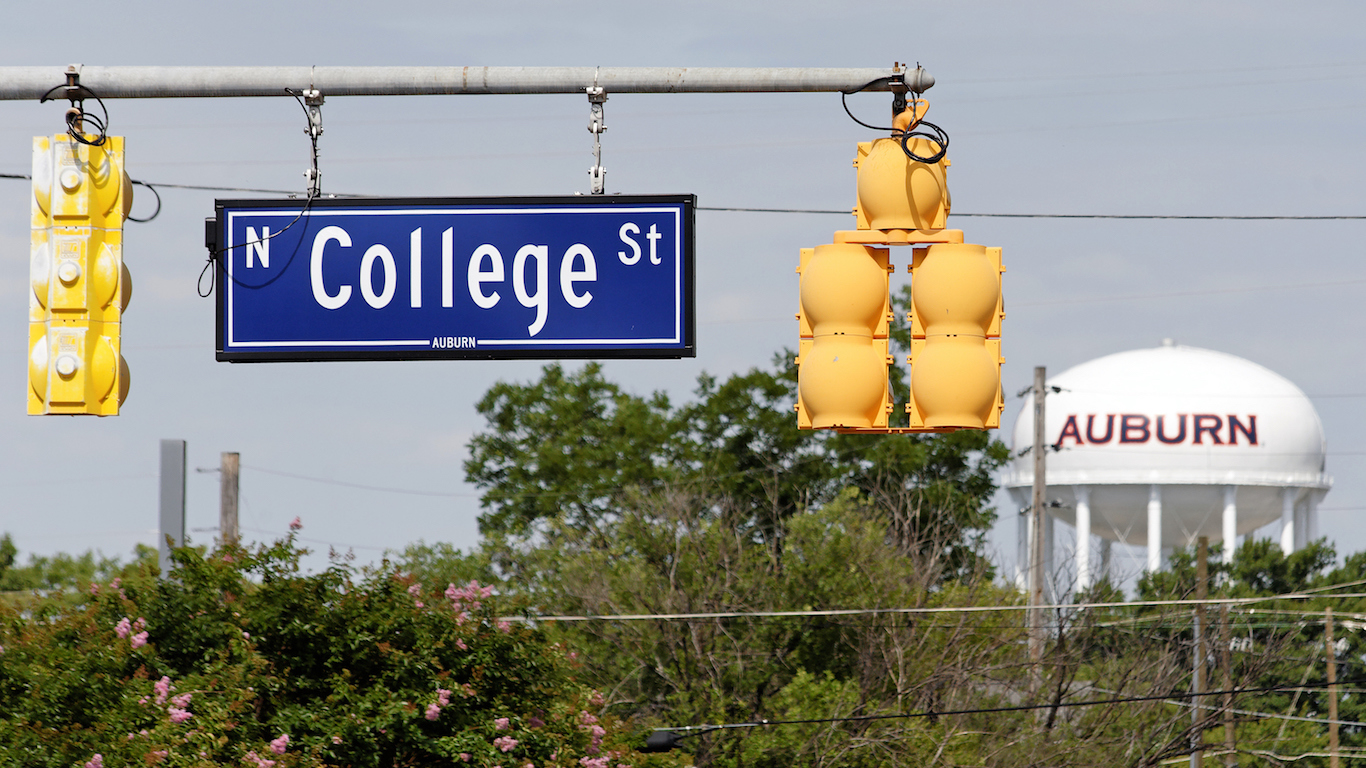With unemployment at over a decade low, wages at all-time highs, and poverty on the decline, the U.S. economy is flourishing — or so it would seem. For Americans struggling financially it can be difficult to feel encouraged by such optimistic reports. It is a common complaint among ordinary Americans and economists alike: economic measures might be indicative of overall economic performance but rarely connect to the lived experiences of Americans.
For example, while the federal minimum wage is $7.25 an hour, most agree this is not a livable wage. The Economic Policy Institute, a non profit think tank, calculated the income families need to secure a modest yet adequate standard of living in counties and metro areas across the United States. Americans entering the workforce or starting a family have thousands of cities to choose from — and some are more expensive places than others.
In order to illustrate what it looks like to live in the most and least expensive places, 24/7 Wall St. reviewed monthly living expenses from EPI’s family budget calculator in the most expensive metro areas based on the Bureau of Economic Analysis’ regional price parities. The EPI designs its family budgets to provide a more accurate and more complete measure of financial security in America than the federal poverty rate does.
In an email to 24/7 Wall St., EPI research assistant Zane Mokhiber explained, “Wherever housing and childcare is expensive, cities are expensive, and vice versa.” By contrast, food, transportation, and health care costs tend to be relatively uniform across the the nation’s major cities.
In all but one of the 25 cities where goods and services are least expensive, average monthly housing costs for a family of four are $800 or lower. Unlike more expensive areas, childcare costs for families living in these cities tend to exceed housing costs.
As Mokhiber noted, a high cost of living is not the same as low affordability, and it is important to measure living costs against income. While not universally the case, residents of the most expensive cities tend to have higher incomes.
In order to determine what it actually costs to live in America’s least expensive cities, 24/7 Wall St. first identified the 25 cities with the lowest cost of living according to the Bureau of Economic Analysis (BEA) as measured by regional price parities for metro. We matched to each of these cities monthly living costs for a family of four (two parents and two children) and other cost of living data provided by the Economic Policy Institute (EPI).
The EPI data is the basis for its Family Budget Calculator, which measures the income a family needs in order to attain a modest yet adequate standard of living. The budgets estimate community-specific costs for 10 family types (one or two adults with zero to four children) in all counties and metro areas in the United States.
Poverty rates and educational attainment rates come from the U.S. Census Bureau’s 1-year 2016 American Community Survey.
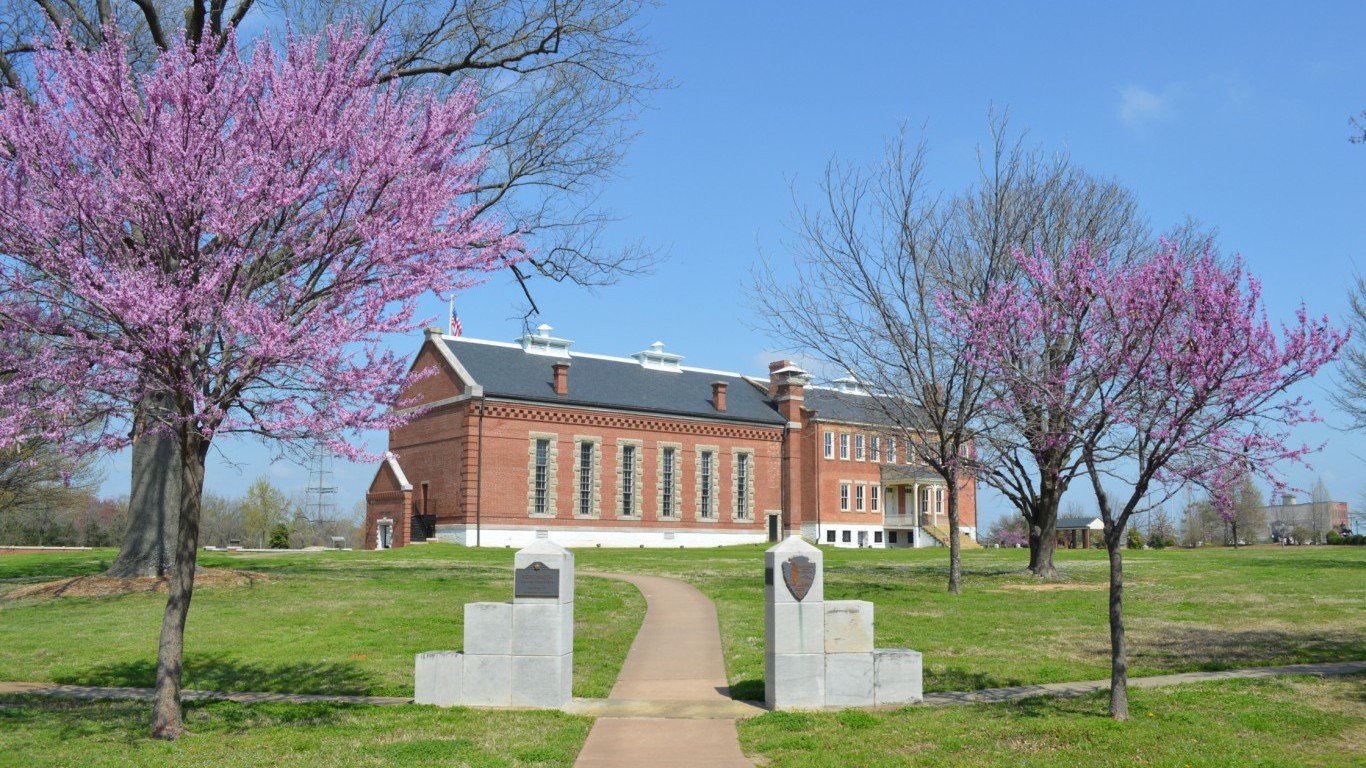
25. Fort Smith, AR-OK
> BEA cost of living: 15.4% less expensive than national average
> Monthly living costs, family of 4: $5,788
> Monthly housing costs, family of 4: $697
> Monthly food costs, family of 4: $695
> Adults with at least a bachelor’s degree: 15.1%
> Poverty rate: 18.2%
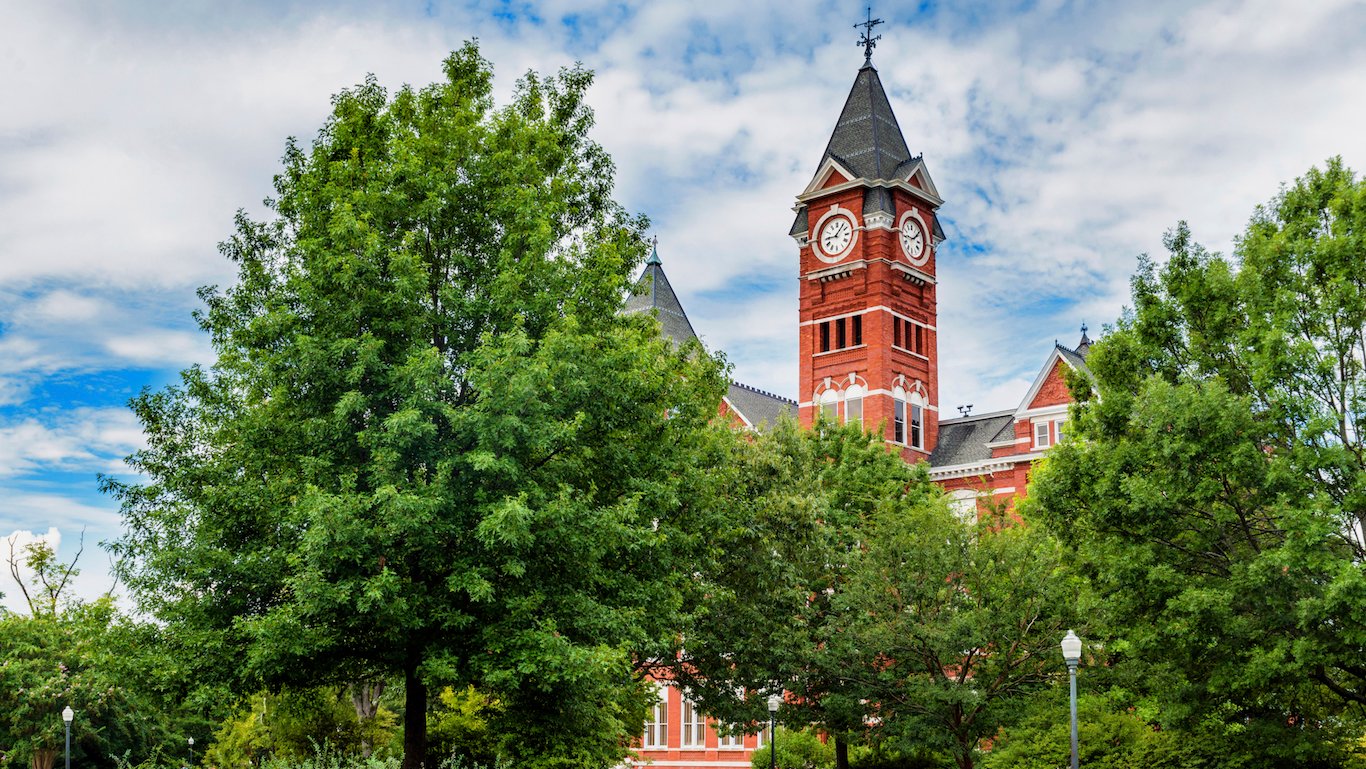
24. Auburn-Opelika, AL
> BEA cost of living: 15.4% less expensive than national average
> Monthly living costs, family of 4: $6,795
> Monthly housing costs, family of 4: $827
> Monthly food costs, family of 4: $830
> Adults with at least a bachelor’s degree: 35.7%
> Poverty rate: 19.1%

23. Weirton-Steubenville, WV-OH
> BEA cost of living: 15.5% less expensive than national average
> Monthly living costs, family of 4: $6,130
> Monthly housing costs, family of 4: $695
> Monthly food costs, family of 4: $696
> Adults with at least a bachelor’s degree: 18.4%
> Poverty rate: 13.4%
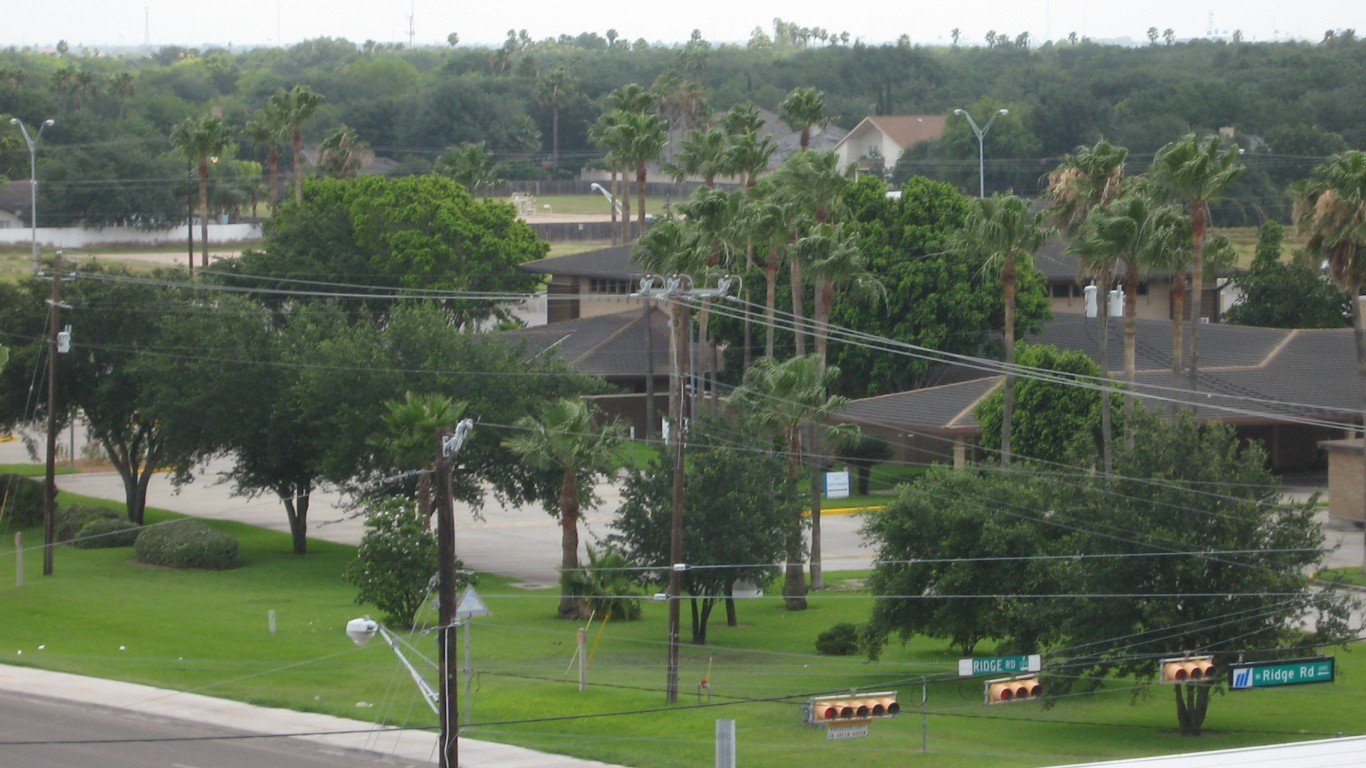
22. McAllen-Edinburg-Mission, TX
> BEA cost of living: 15.5% less expensive than national average
> Monthly living costs, family of 4: $5,026
> Monthly housing costs, family of 4: $758
> Monthly food costs, family of 4: $579
> Adults with at least a bachelor’s degree: 18.3%
> Poverty rate: 31.4%
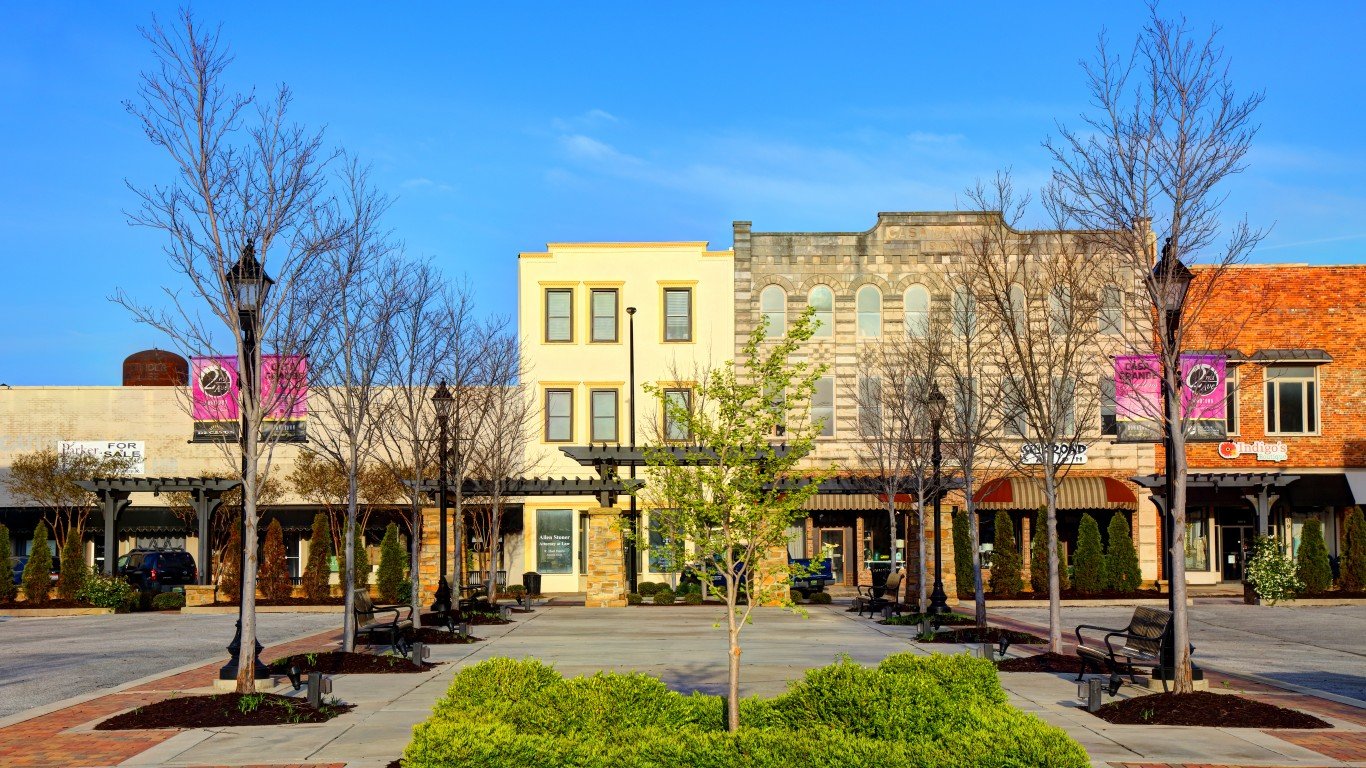
21. Decatur, AL
> BEA cost of living: 15.7% less expensive than national average
> Monthly living costs, family of 4: $6,180
> Monthly housing costs, family of 4: $669
> Monthly food costs, family of 4: $733
> Adults with at least a bachelor’s degree: 18.1%
> Poverty rate: 16.2%

20. Florence-Muscle Shoals, AL
> BEA cost of living: 15.8% less expensive than national average
> Monthly living costs, family of 4: $5,978
> Monthly housing costs, family of 4: $669
> Monthly food costs, family of 4: $695
> Adults with at least a bachelor’s degree: 20.8%
> Poverty rate: 15.7%
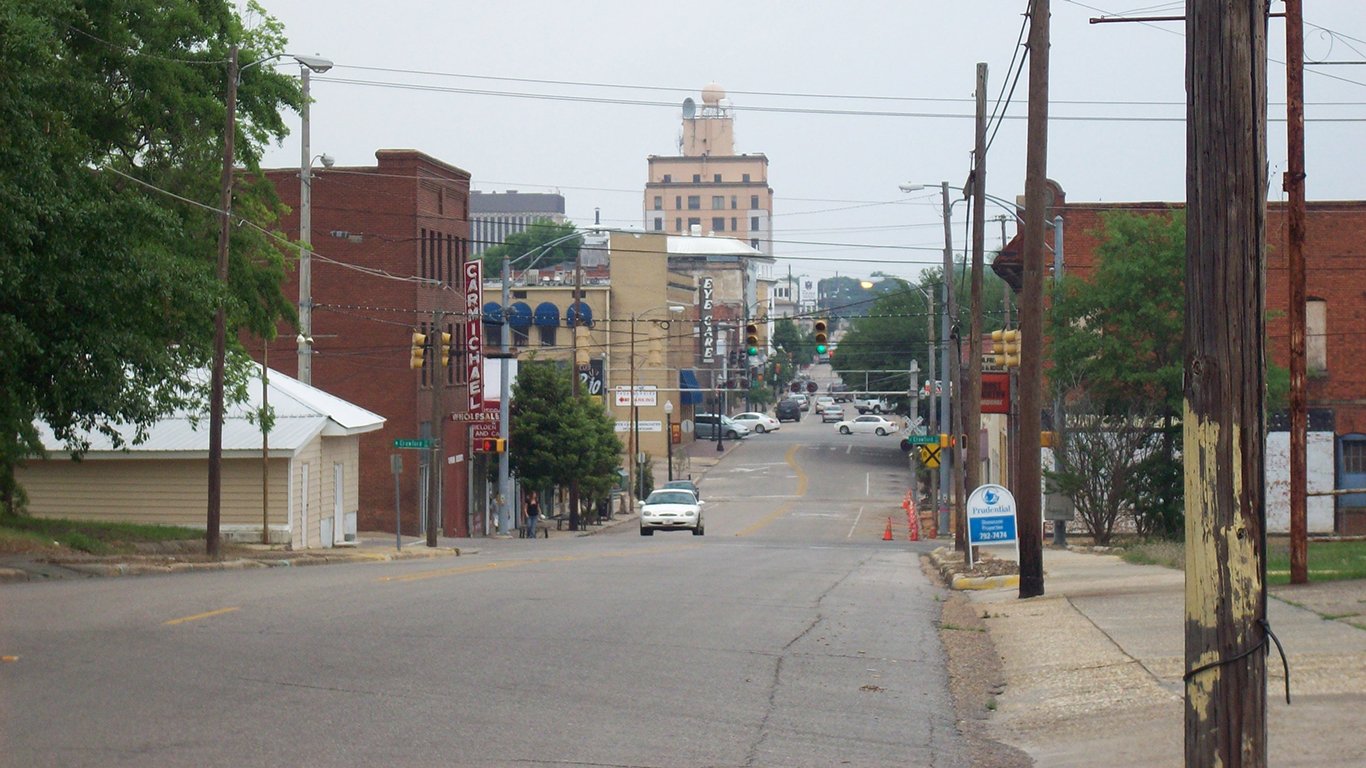
19. Dothan, AL
> BEA cost of living: 15.9% less expensive than national average
> Monthly living costs, family of 4: $6,261
> Monthly housing costs, family of 4: $695
> Monthly food costs, family of 4: $776
> Adults with at least a bachelor’s degree: 17.6%
> Poverty rate: 19.5%
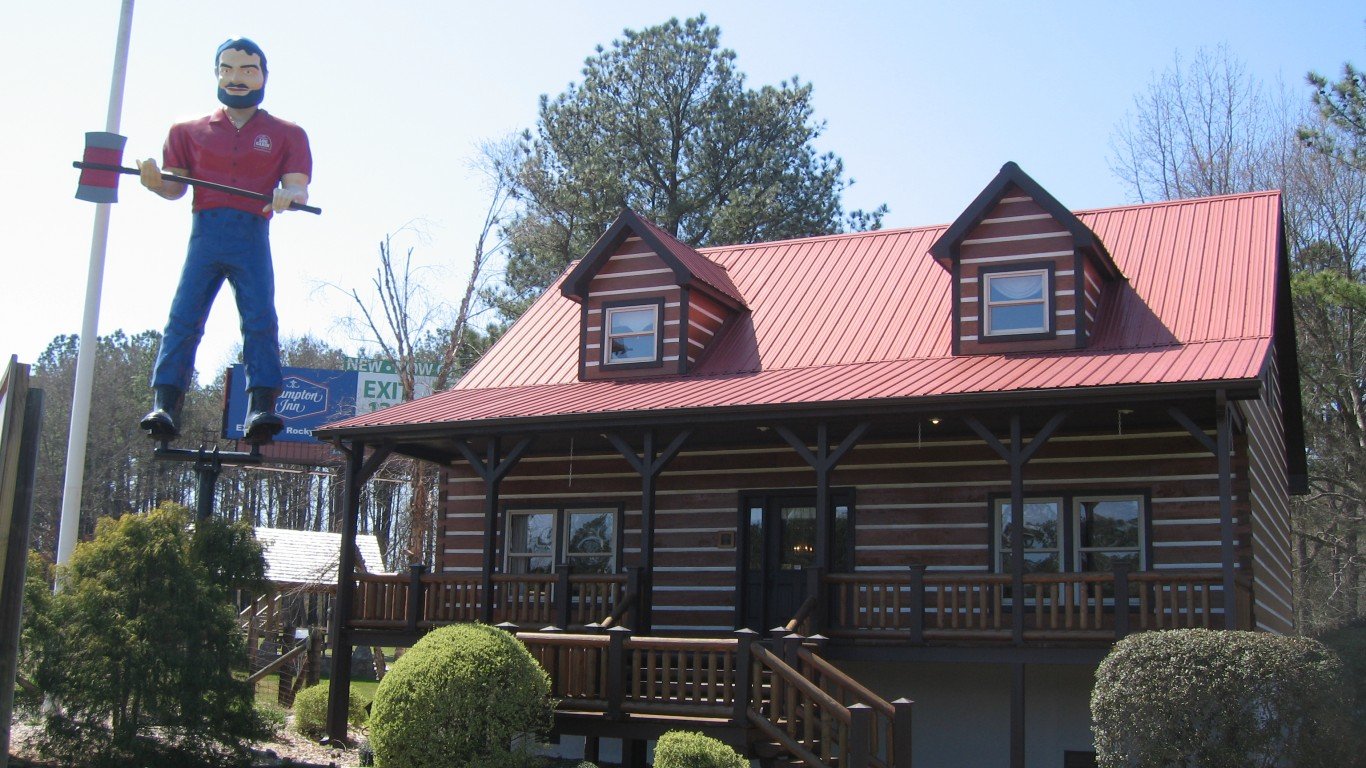
18. Rocky Mount, NC
> BEA cost of living: 16.1% less expensive than national average
> Monthly living costs, family of 4: $6,419
> Monthly housing costs, family of 4: $718
> Monthly food costs, family of 4: $673
> Adults with at least a bachelor’s degree: 17.0%
> Poverty rate: 17.8%
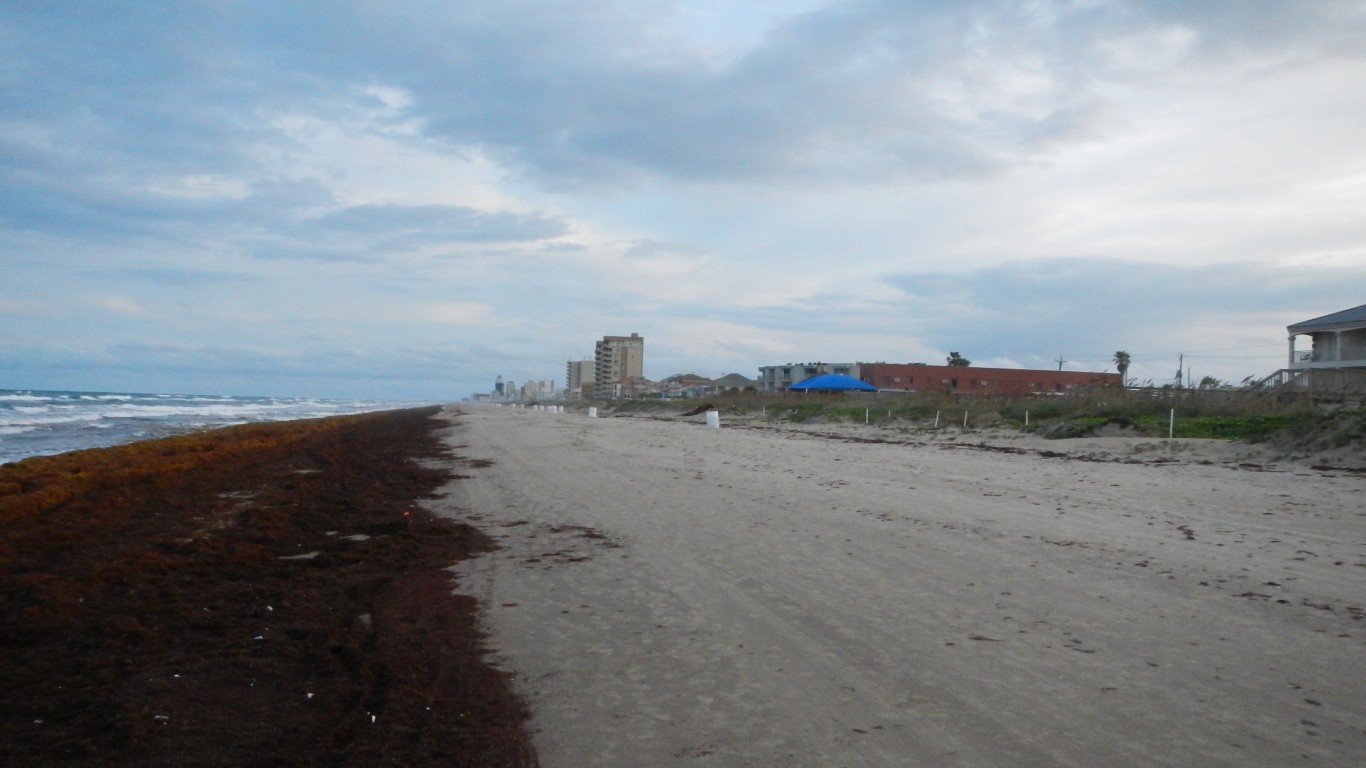
17. Brownsville-Harlingen, TX
> BEA cost of living: 16.2% less expensive than national average
> Monthly living costs, family of 4: $4,909
> Monthly housing costs, family of 4: $697
> Monthly food costs, family of 4: $559
> Adults with at least a bachelor’s degree: 17.0%
> Poverty rate: 29.3%
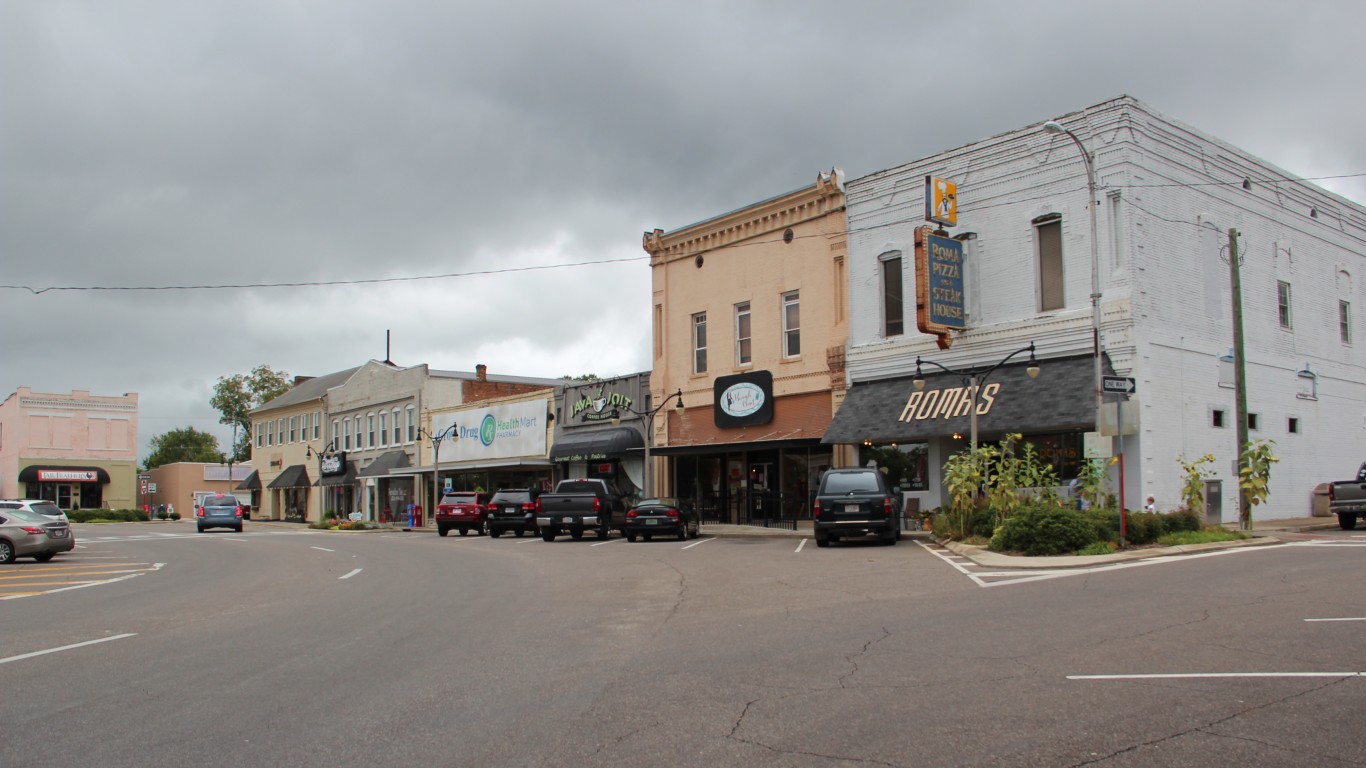
16. Anniston-Oxford-Jacksonville, AL
> BEA cost of living: 16.2% less expensive than national average
> Monthly living costs, family of 4: $6,136
> Monthly housing costs, family of 4: $679
> Monthly food costs, family of 4: $736
> Adults with at least a bachelor’s degree: 16.5%
> Poverty rate: 16.3%
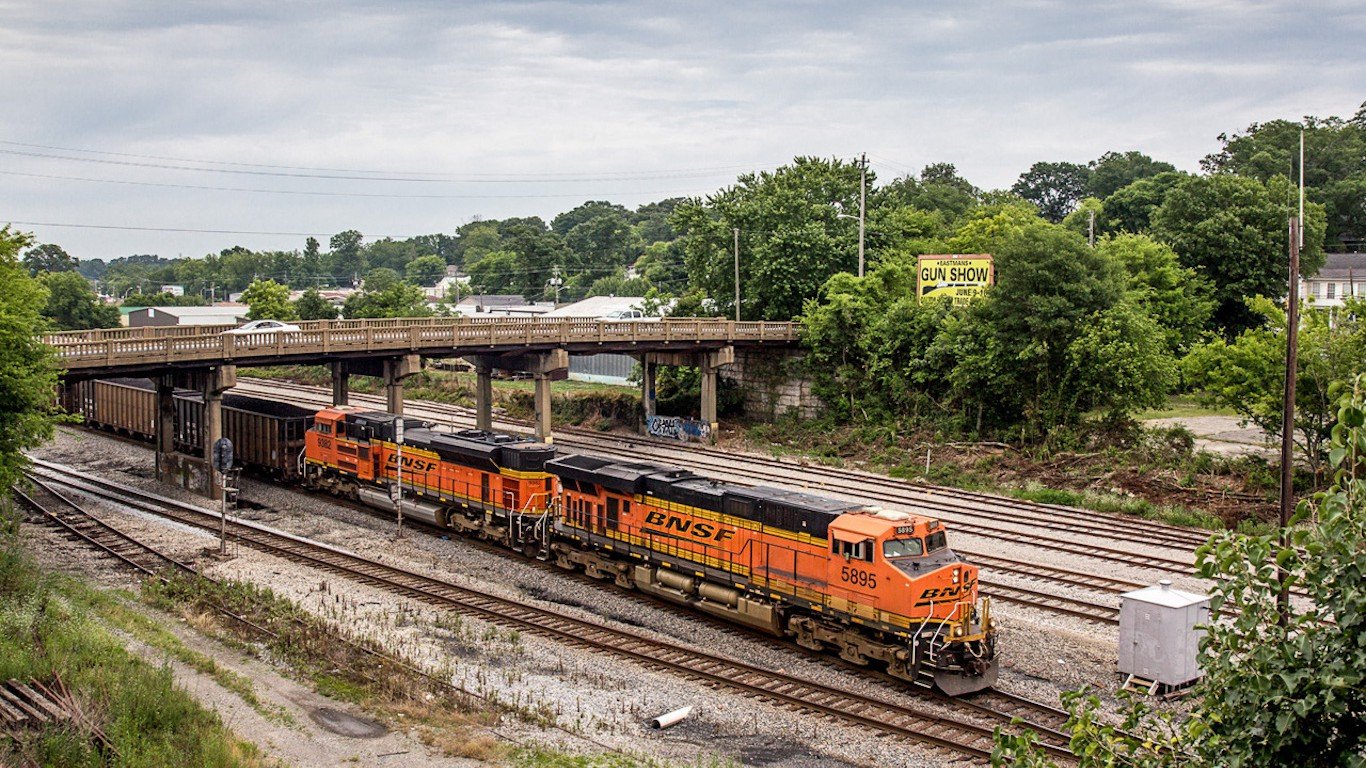
15. Dalton, GA
> BEA cost of living: 16.6% less expensive than national average
> Monthly living costs, family of 4: $5,714
> Monthly housing costs, family of 4: $696
> Monthly food costs, family of 4: $691
> Adults with at least a bachelor’s degree: 11.8%
> Poverty rate: 18.4%
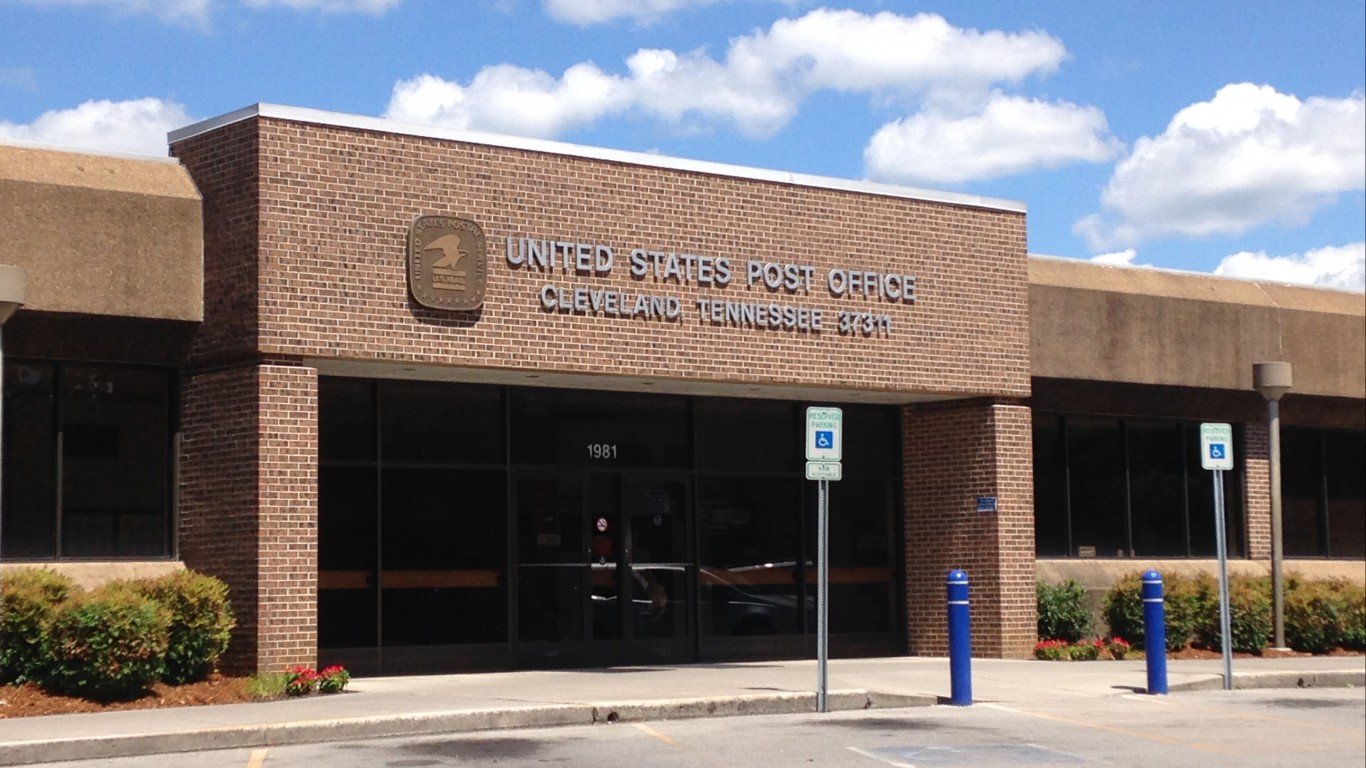
14. Cleveland, TN
> BEA cost of living: 16.6% less expensive than national average
> Monthly living costs, family of 4: $6,257
> Monthly housing costs, family of 4: $760
> Monthly food costs, family of 4: $765
> Adults with at least a bachelor’s degree: 21.4%
> Poverty rate: 13.0%

13. Gadsden, AL
> BEA cost of living: 16.7% less expensive than national average
> Monthly living costs, family of 4: $6,119
> Monthly housing costs, family of 4: $661
> Monthly food costs, family of 4: $713
> Adults with at least a bachelor’s degree: 15.6%
> Poverty rate: 16.7%

12. Albany, GA
> BEA cost of living: 16.7% less expensive than national average
> Monthly living costs, family of 4: $6,279
> Monthly housing costs, family of 4: $716
> Monthly food costs, family of 4: $734
> Adults with at least a bachelor’s degree: 18.6%
> Poverty rate: 25.0%

11. Pine Bluff, AR
> BEA cost of living: 17.1% less expensive than national average
> Monthly living costs, family of 4: $5,678
> Monthly housing costs, family of 4: $691
> Monthly food costs, family of 4: $707
> Adults with at least a bachelor’s degree: 16.7%
> Poverty rate: 21.8%
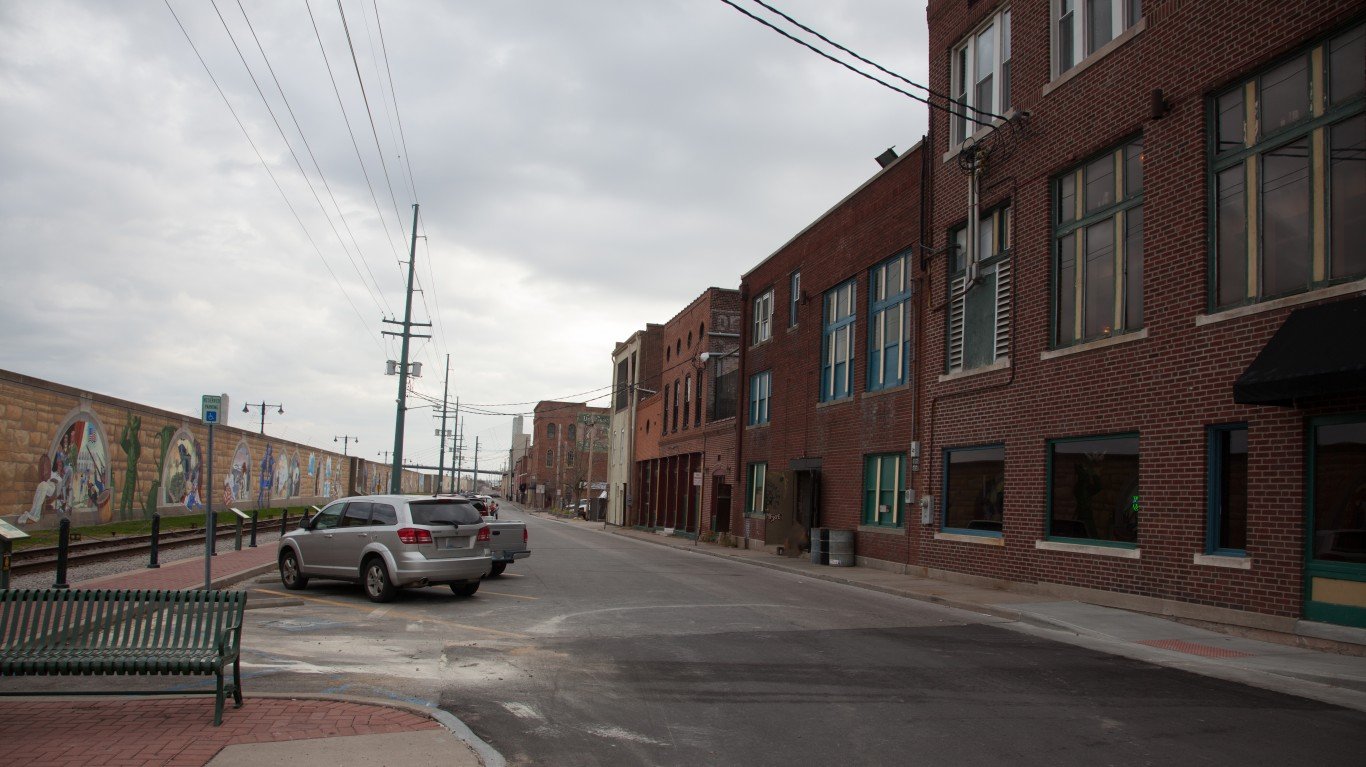
10. Cape Girardeau, MO-IL
> BEA cost of living: 17.3% less expensive than national average
> Monthly living costs, family of 4: $6,560
> Monthly housing costs, family of 4: $703
> Monthly food costs, family of 4: $693
> Adults with at least a bachelor’s degree: 26.6%
> Poverty rate: 17.6%
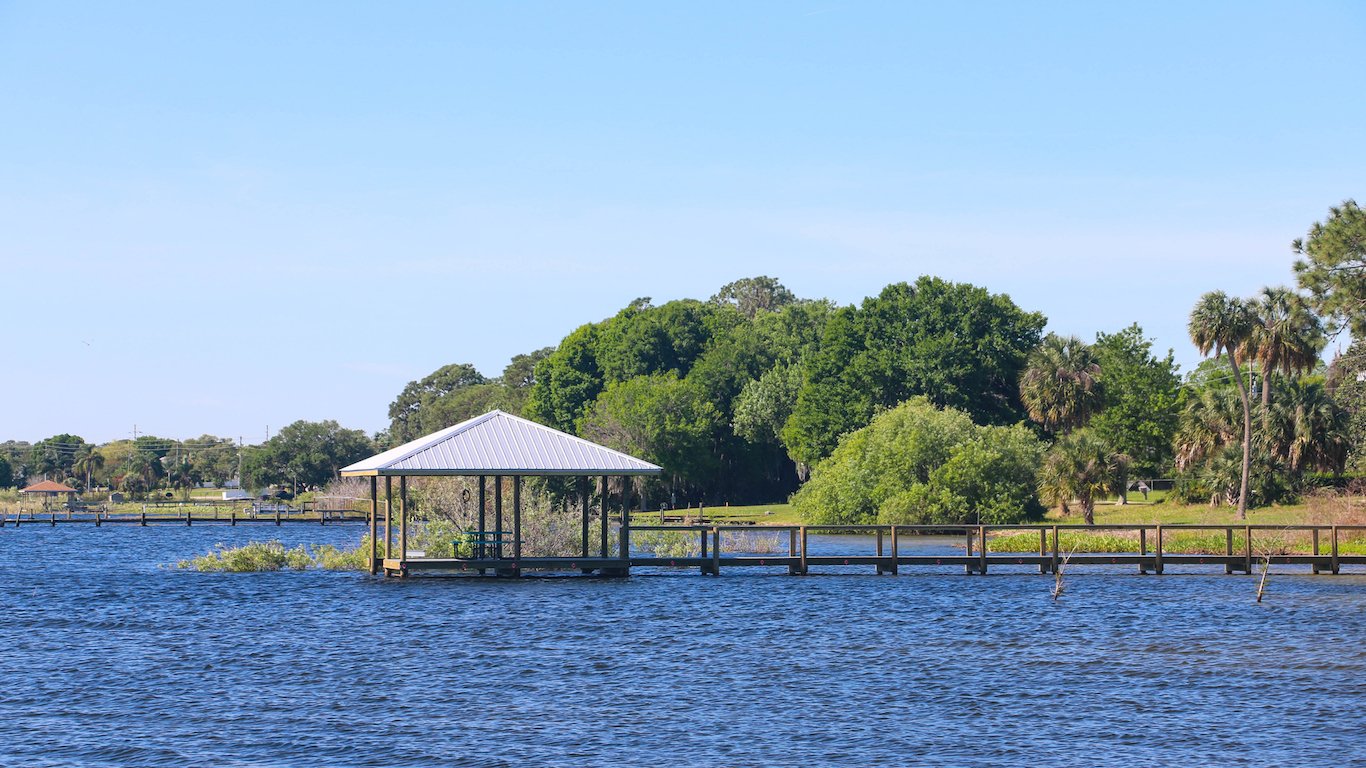
9. Sebring, FL
> BEA cost of living: 17.4% less expensive than national average
> Monthly living costs, family of 4: $5,736
> Monthly housing costs, family of 4: $790
> Monthly food costs, family of 4: $744
> Adults with at least a bachelor’s degree: 13.0%
> Poverty rate: 18.8%

8. Jefferson City, MO
> BEA cost of living: 17.8% less expensive than national average
> Monthly living costs, family of 4: $6,397
> Monthly housing costs, family of 4: $644
> Monthly food costs, family of 4: $708
> Adults with at least a bachelor’s degree: 27.1%
> Poverty rate: 8.6%
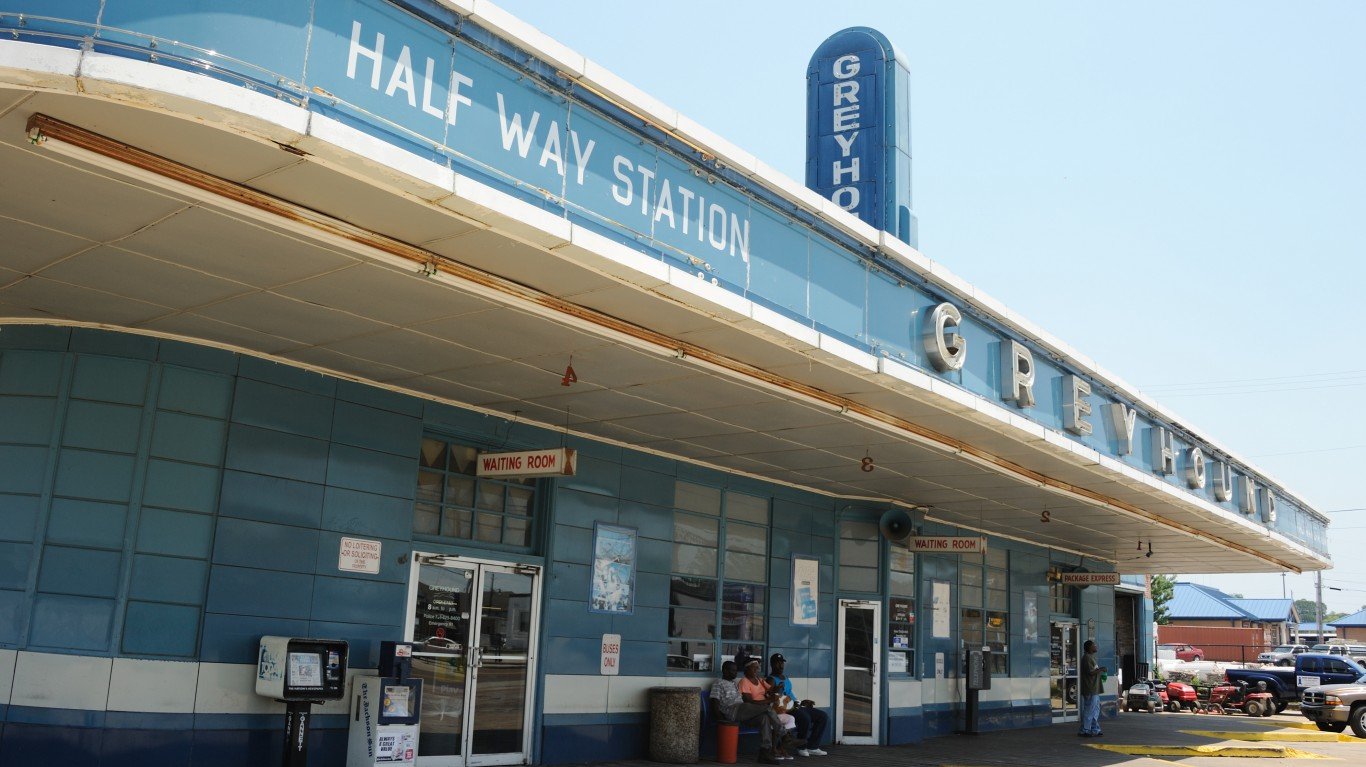
7. Jackson, TN
> BEA cost of living: 17.9% less expensive than national average
> Monthly living costs, family of 4: $6,180
> Monthly housing costs, family of 4: $734
> Monthly food costs, family of 4: $713
> Adults with at least a bachelor’s degree: 19.1%
> Poverty rate: 17.8%
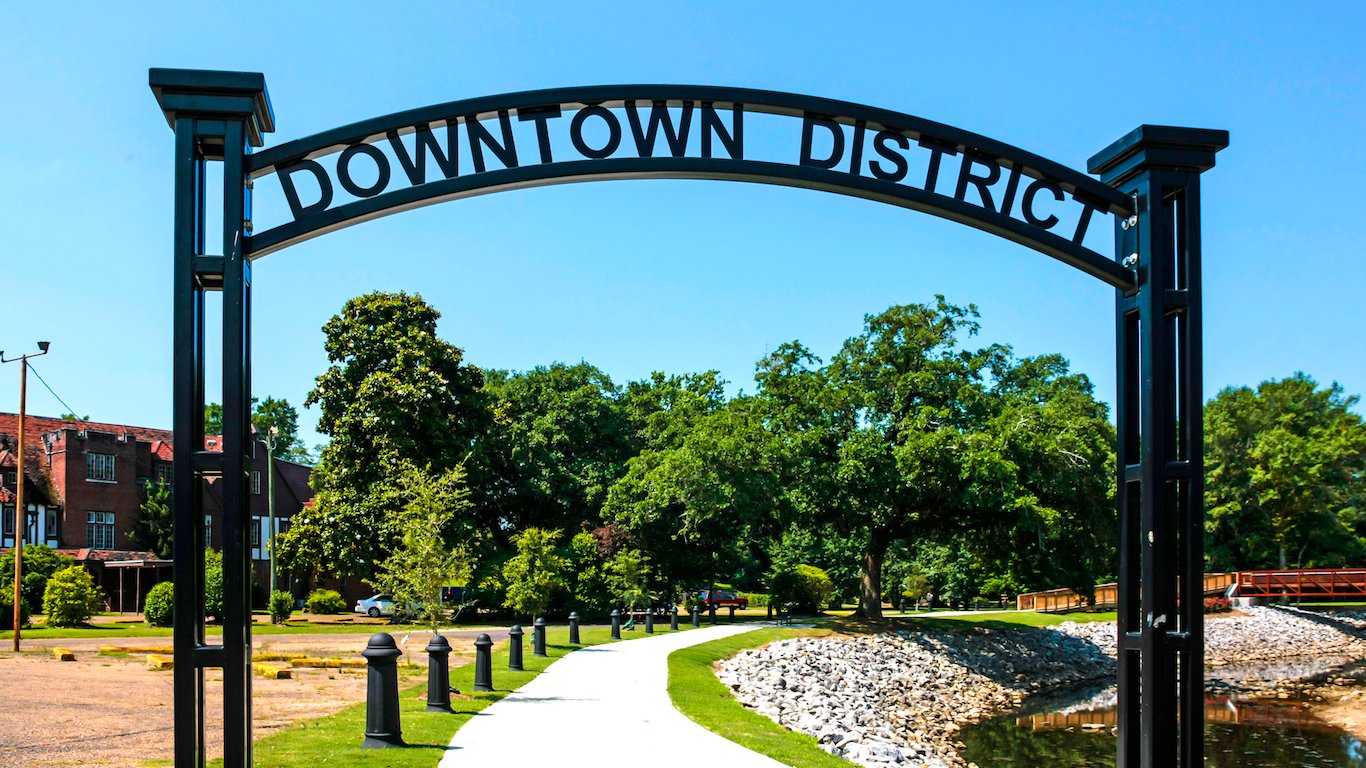
6. Hattiesburg, MS
> BEA cost of living: 17.9% less expensive than national average
> Monthly living costs, family of 4: $5,748
> Monthly housing costs, family of 4: $790
> Monthly food costs, family of 4: $758
> Adults with at least a bachelor’s degree: 29.0%
> Poverty rate: 19.8%

5. Jonesboro, AR
> BEA cost of living: 18.2% less expensive than national average
> Monthly living costs, family of 4: $5,517
> Monthly housing costs, family of 4: $662
> Monthly food costs, family of 4: $673
> Adults with at least a bachelor’s degree: 21.4%
> Poverty rate: 17.6%
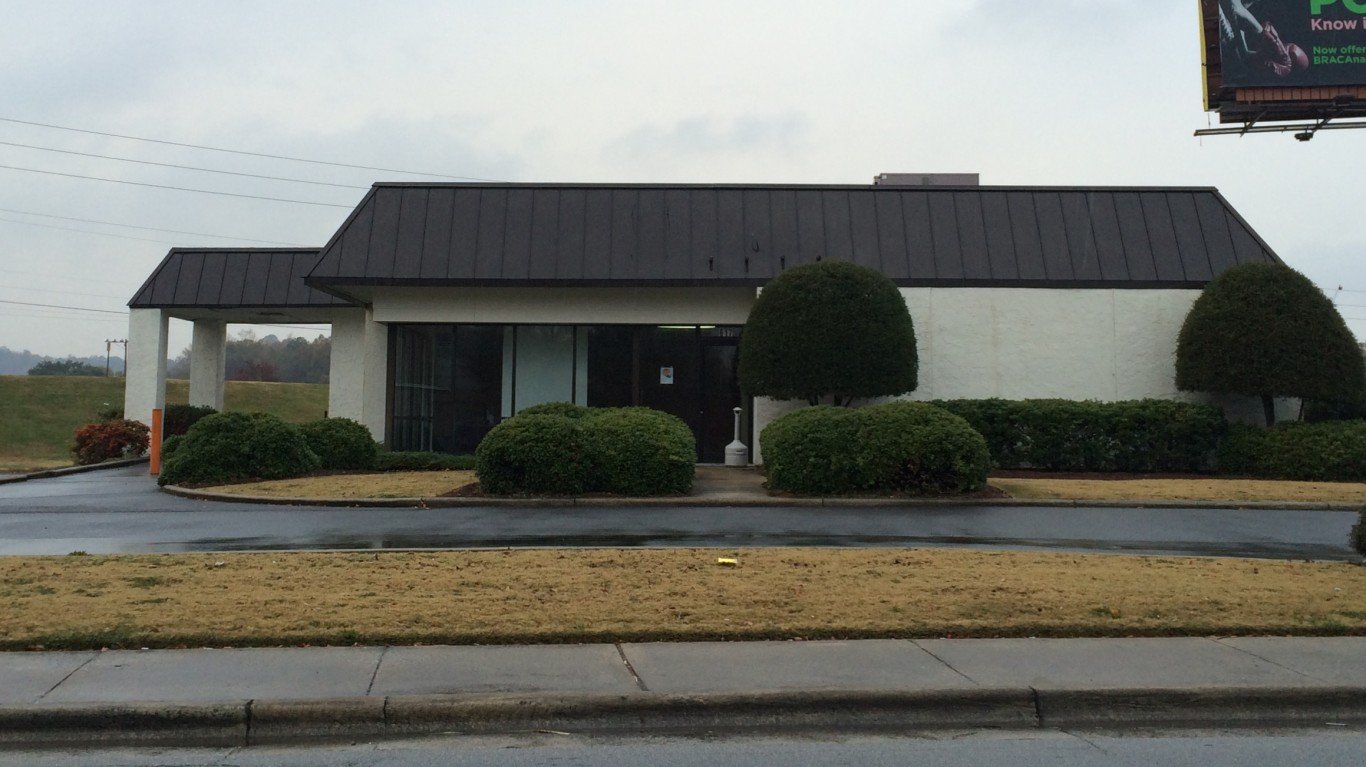
4. Rome, GA
> BEA cost of living: 18.9% less expensive than national average
> Monthly living costs, family of 4: $5,764
> Monthly housing costs, family of 4: $691
> Monthly food costs, family of 4: $693
> Adults with at least a bachelor’s degree: 24.2%
> Poverty rate: 12.7%

3. Valdosta, GA
> BEA cost of living: 19.1% less expensive than national average
> Monthly living costs, family of 4: $6,304
> Monthly housing costs, family of 4: $709
> Monthly food costs, family of 4: $753
> Adults with at least a bachelor’s degree: 22.9%
> Poverty rate: 22.6%

2. Danville, IL
> BEA cost of living: 19.6% less expensive than national average
> Monthly living costs, family of 4: $6,667
> Monthly housing costs, family of 4: $741
> Monthly food costs, family of 4: $648
> Adults with at least a bachelor’s degree: 14.0%
> Poverty rate: 20.9%
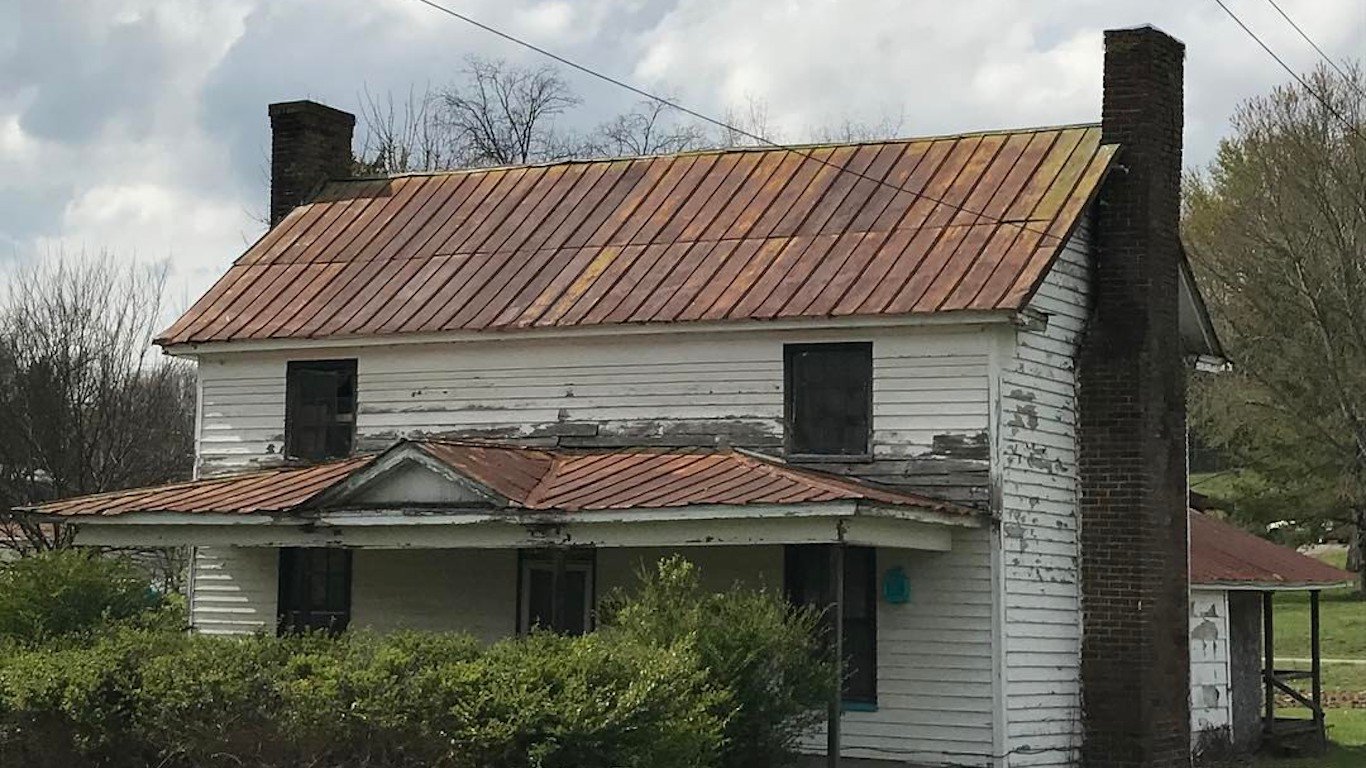
1. Morristown, TN
> BEA cost of living: 20.5% less expensive than national average
> Monthly living costs, family of 4: $5,701
> Monthly housing costs, family of 4: $677
> Monthly food costs, family of 4: $776
> Adults with at least a bachelor’s degree: 17.1%
> Poverty rate: 17.6%
